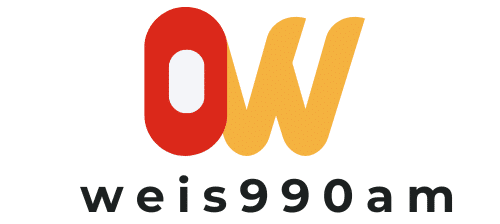In the digital era where online presence is as crucial as the physical one, a website serves as the virtual storefront for businesses. For small and medium-sized enterprises (SMEs), the significance of having a well-optimized, user-friendly website is beyond measure. This article will guide you on how your business can enhance the accessibility of your website, ensuring that you reach a wider market, including people with disabilities.
1. Understanding The Concept of Web Accessibility
Before diving into the how, it’s essential for you to understand the why. Web accessibility has become a crucial aspect of the digital market. Web accessibility means that websites, tools, and technologies are designed and developed in a way that people with disabilities can use them.
Also read : What Are the Effective Lead Generation Techniques for UK B2B Software Companies?
Not only is web accessibility a moral obligation to ensure inclusivity, but it is also a legal requirement in many jurisdictions, including the United Kingdom (UK). It is, therefore, crucial for businesses to make their websites accessible to all users, regardless of their abilities. Your business will not only meet compliance requirements but also tap into a wider market potential, enhance user experience, and improve your brand’s reputation.
2. Accessibility Compliance: The Legal Aspect
The UK law stipulates that businesses must ensure their digital content, including websites, is accessible to people with disabilities. The Equality Act 2010, and the Public Sector Bodies (Websites and Mobile Applications) (No. 2) Accessibility Regulations 2018 are some of the legal provisions promoting web accessibility in the UK.
Additional reading : How Can UK Craft Breweries Expand Their Market Reach Through E-commerce?
The regulations require that all new public sector websites from September 2018, and all other public sector websites from September 2020, should be accessible. While these laws primarily focus on public sector bodies, they set a strong precedent for all businesses.
To avoid potential legal implications, your business should adhere to the Web Content Accessibility Guidelines (WCAG) 2.1 at level AA, which are internationally recognized guidelines that explain how to make web content more accessible.
3. Tools and Services for Website Accessibility
A myriad of tools and services can help you improve your website’s accessibility. These range from accessibility testing tools, plugins, and services that can assess your website’s current level of accessibility and identify areas that require improvements.
Services like WAVE, aXe, and Lighthouse are just a few examples. They provide comprehensive scans of your website and generate reports on areas that fail to meet accessibility standards. These services also offer solutions and recommendations on how to fix those issues.
You may also consider hiring professionals specializing in web accessibility to audit and redesign your website. Such an investment can go a long way in ensuring that your website is fully compliant and accessible to everyone.
4. Best Practices for Optimizing Website Accessibility
To make your website more accessible, start by implementing some best practices. These include:
-
Use of Alt Text for Images: Alt text provides a description of images on your website, which can be read out by screen readers for visually impaired users.
-
Keyboard-Friendly Site: Ensure that your website can be fully navigated using a keyboard alone. Many people with disabilities rely on keyboards, not a mouse, to navigate websites.
-
Easy Readability: Use simple language and clear fonts. Break up content with headers and bullet points to make it easier to read and understand.
-
Closed Captioning for Videos: If you use videos on your website, provide closed captions. This is not only beneficial for users with hearing impairments but also those who prefer to watch videos without sound.
-
Consistent Layout: Keep a consistent layout throughout your website. This helps users predict where to find information, making navigation easier.
Remember, the goal is to create an inclusive digital environment where everyone, including people with disabilities, can access and benefit from your content.
5. The Role of Data in Accessibility Compliance
The importance of data cannot be overstated when it comes to website accessibility. Data about your website’s performance and user behavior can offer valuable insights into potential accessibility issues.
Website analytics can reveal high bounce rates or low time-on-page metrics, which may indicate difficulties in accessing or navigating your website. User feedback and complaints are also valuable data points that can highlight accessibility problems.
By regularly analyzing and acting on these data, you can continuously improve your website’s accessibility and ensure compliance with accessibility standards.
Remember, website accessibility is not a one-time fix but an ongoing commitment. By optimizing your website for accessibility, your business can foster inclusivity, boost customer engagement, and secure a competitive edge in the digital market.
6. Incorporating Accessibility in Digital Marketing Strategies
Incorporating accessibility into your digital marketing strategies is not just about compliance; it’s also a significant business opportunity. Accessible websites tend to rank higher on search engines, improving your website’s visibility. As a result, you attract a broader audience, including people with disabilities, who represent a considerable market segment.
Start by ensuring that your content is accessible. This means the use of alt text for images and captions for videos, as mentioned earlier. But it also includes structuring your web content in a way that’s easy for everyone to understand. Use headings and subheadings correctly, and ensure that your links are descriptive.
Moreover, your digital marketing strategies should consider the accessibility of your mobile apps. More and more people are using mobile devices to access the internet. Hence, your mobile apps should also be inclusive. The Web Content Accessibility Guidelines (WCAG) provide guidelines for mobile app accessibility too.
Digital accessibility should also be a part of your social media strategy. Many social media platforms now provide accessibility features that can enhance user experience. Make sure you’re using these features to make your social media content more accessible.
Lastly, don’t forget the power of accessible email marketing. Use clear, concise language, appropriate font sizes, and meaningful text for any links in your emails.
By integrating accessibility into your digital marketing strategies, you not only comply with accessibility standards but also enhance your brand’s reputation and reach a larger audience.
7. Conclusion: The Importance of Continuous Commitment to Web Accessibility
In conclusion, web accessibility should not be a one-time task but an ongoing commitment for small businesses. It is about creating an inclusive digital environment where everyone, regardless of their abilities, can access your products and services.
The benefits of a fully accessible website are many. They range from legal compliance and improved search engine rankings to enhanced user experience and tapping into a wider market.
The process of achieving web accessibility involves understanding the concept of web accessibility, knowing the legal aspects, using accessibility testing tools and services, implementing best practices, and incorporating accessibility into your digital marketing strategies.
Remember to continuously monitor your website’s performance and user behavior to identify and address potential accessibility issues. Encourage user feedback and be open to making necessary changes.
In a world that’s increasingly digital, it’s time for UK SMEs to step up and make web accessibility a priority. It’s not just the right thing to do, it’s also smart business. By making your website accessible, you’re opening your business to a wider audience, improving your brand’s reputation, and staying ahead in the ever-competitive digital market.






